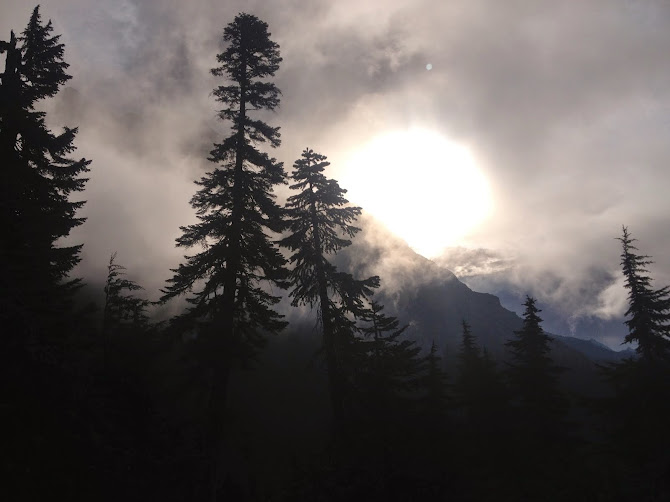"The Big Three". They be shelter, pack and sleeping system. I am always on the lookout to find new gear that will be sturdy and light, or even super duper light. As an example I own a Tarp Tent Notch, which is an excellent shelter and I used it on the PCT in 2012. It weighs in at 26 ounces, which compared to many backpacking tents out there in Gearlandia is very light. However this doesn't include the weight of poles, stakes and some kind of ground cover to protect the tent floor. So depending on the other choices made, this light tent could become much heavier. Ti stakes instead of aluminum, hiking sticks instead dedicated tent poles and choosing cubin fiber over tyvek all would make the shelter quite light but it would put a further hole in ones pocket.
At long last I've decided to go with the Zpack Hexamid Solo Plus. Total weight 18.5 ounces, including ground cloth, stakes and stuff sack. WOW. Also $475 - double WOW. But it is palatial and better suited to my needs than other tents out there. Plus it's gotten great reviews from long distance hikers who've lived in them for months at a time. Stable in big winds and keeps out the rain.
 |
| ULA Circuit |
Sleeping bags or quilts are the comfortable and warm sleeping and safety net piece of gear that everyone needs to carry with them when they are out in the back country. Something needs to be carried and in my book, it needs to be warm enough for enjoyment and light enough for comfort. My standard choice of commercial bag is made by Western Mountaineering and the model is the Megalite. Weighing in at 24 ounces it has kept me warm on all the trips I've taken with it and I couldn't be happier. It is rated for 30 degrees but I've been down in the mid 30's and still been warm. I plan to carry a bivy sack to lower the temp rating when necessary.
 |
| Western Mountaineering Megalite |
Sometimes people talk about a sleep system, which for me includes a pad of some sort. Add a pad and you can have a warm, comfy and cozy nest for the finest in outdoor sleeping. My newest purchase in this area, and one that I hope will last for many years, is a Neoair X-lite by Therm-a-rest. It weighs 11 ounces for a full coverage pad and has 3.5 R rating, all the better to keep the ground cold away. Cost (ouch) $159 from REI. Double ouch. But for me, sleeping comfortably is crucial to my over all well being so I guess it's worth it. Also included in a sleep system is the clothing worn while sleeping which can effectively make it possible to carry a lighter bag because you are wearing some of the system on your body. If you have dedicated sleep clothes this also keeps dirty skin away from the interior of the bag allowing it to stay cleaner and retain its loft better.
 |
| NeoAir X-lite |




No comments:
Post a Comment